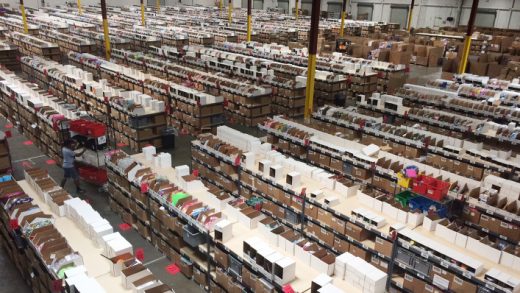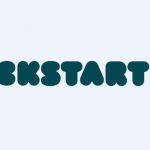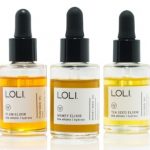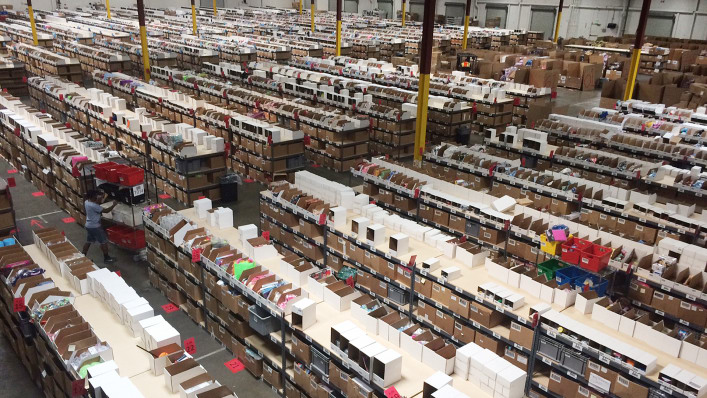How The Online Dollar Store Startup Hollar Found Success With Thrifty Millennial Moms
David Yeom knows his way around a dollar store. Growing up in East L.A. in the 1990s, he would spend weekends hunting for deals in the discount shops with his mother. He has vivid memories of carefully surveying the colorful aisles and digging through display bins, armed with his $1 weekly allowance.
“It’s not a lot,” Yeom, 41, tells Fast Company. “But you can go pretty far with it at a dollar store.”
Years later, Yeom still regularly inspects bargain-priced merchandise—only now he does it as cofounder and CEO of Hollar, the first online dollar store. Brick-and-mortar versions of these shops are still thriving—with an estimated 80 million loyal customers—but none of the major chains have an online retail presence. Based in Southern California, Hollar is filling that void, reimagining the physical stores as a digital discount haven where the majority of inventory costs $2 and nothing goes for more than $10. Tens of thousands of products are available, ranging from necessities to impulse buys, and thanks to a simple U/X, browsing until something catches your fancy (a must in dollar stores) is easy. Hollar stocks brands you recognize (Huggies, Jergens, Febreze, Pop-Tarts) and ones you probably don’t (Zing, Num Noms, Bolis Ice Pops). Via the site and app, you can buy a $3 cellphone case alongside $1 dishwasher soap and $1.50 baby bibs.
It’s all adding up to good business for Yeom and his cofounders. Hollar experienced double-digit month-over-month sales in the last year and hit its first million-dollar month in April 2016, just five months after launch, with the average purchase totaling $30. (To turn a profit, Hollar needs at least $10 per transaction). “We built a model that is sustainable and profitable,” says cofounder and COO John Um, 39.
Hollar’s typical customer is female, a mom between the ages of 25-34. And, unlike the target client of most retail startups, she is not an affluent resident of the country’s coasts. She lives in suburban and rural areas, with a middle-to-low household income. “It’s an area that has been underserved,” Yeom says. “There’s been, historically, a lack of innovation to do more for this segment [in e-commerce], and you will find more and more businesses will start to cater to them.”
“It fills us with a tremendous amount of pride that 80% of the shipments being sent out of our warehouse is to outside California and New York,” Yeom adds. “It’s going to Middle America. And we embrace it.”
A Trip Down Memory Aisle
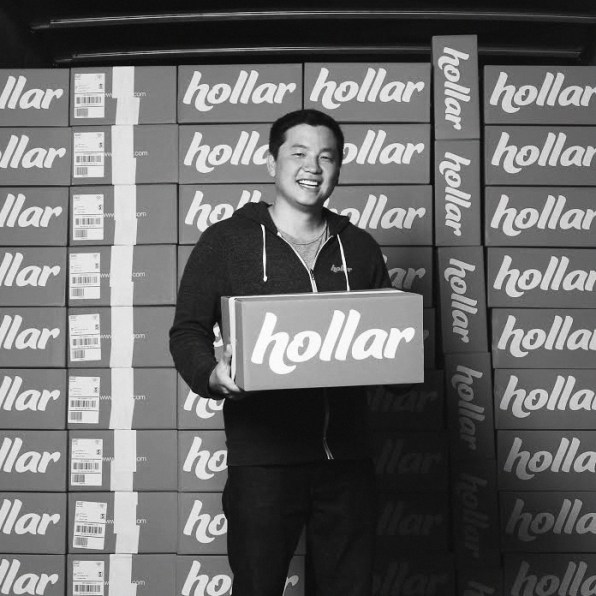
In 2015, Yeom was working as VP at The Honest Company and looking to branch out on his own. He found himself thinking about his childhood and those trips to the dollar stores. They were still in business, so why were there no online equivalents?
Yeom contacted his good friend John Um, then head of strategy at the 99 Cents Only Stores, and asked him, “How come when I go to 99only.com all I get is a store locator? I can’t even purchase a gift card on the site.”
Um explained that it was an issue of legacy: The company, which has nearly 400 locations, never evolved past its original retail model. The supply chain was never designed for it, so the format has remained status quo for decades.
Um agreed there was an opportunity: The number of dollar stores in the United States grew from 24,500 in 2011 to over 30,000 in 2016. Surely, he and Yeom thought, that audience also shops online.
The friends then recruited former ShoeDazzle executives Eddie Rhyu and Thanh Khuu, as well as Brian Lee, cofounder of LegalZoom, ShoeDazzle, and Honest Company. During the initial concept phase, the cofounders took to calling their project “hollar dollar,” a play on the popular slang expression “Holler!” They acquired inventory, purchasing merchandise largely from Chinese manufacturers (as well as some American companies). In November 2015, they shortened the name and established headquarters in Commerce, California, near Los Angeles, in a warehouse that, fittingly, once belonged to the 99 Cents Only store.
The location choice was strategic. Setting up shop next door to the Port of Long Beach and Port of Los Angeles gives Hollar easy access to closeout buys. Whenever there are overruns of current-season items or canceled orders from big box retailers, Hollar can sweep in and purchase them.
The team knew that for Hollar to succeed, the site had to encourage browsing—just like a physical shop does. “A typical dollar store is really about the joy of discovery,” Um says. “It’s about finding things you didn’t know you needed and things you need every day.” Dozens of best-selling and trending items on the homepage invite shoppers—90% of whom come to Hollar without a specific item in mind—to scroll through and “like” them. It looks a lot like Pinterest.
“The Pinterest model was intentional,” explains Eddie Rhyu, 45, Hollar’s chief creative officer. “We love the simplicity of it.”
The similarity to Pinterest has proved appealing to millennial moms, who make up a full 85% of Hollar’s customers and are usually in the market for deals in the top categories of toys and home goods. The company’s best-selling product ever—sold out indefinitely—was a $2 light-up jumbo pillow that came in different formats: sparkling unicorn, pink puppy, and shimmering purple seal. They were so popular, Hollar had to institute a one-per-household limit.

That Hollar is a hit with a young generation of parents doesn’t surprise the executive team. The recession of 2008, says Yeom, changed the consumer mind-set: New moms in their early 20s to late 30s migrated to dollar retailers out of necessity. After the economy recovered, they stayed put. “They want deals, they want value, they want convenience,” Yeom says. “And these type of [dollar store] retailers cater to that.”
Marketing To Millennial Moms
Tiffany Faust, 22, a stay-at-home mom from Henderson, Tennessee, was looking for an AngleCare baby monitor ($19.95) for her daughter when Hollar showed up in a Google search. She says she was “beyond impressed” by the product quality and spent some time checking out the company’s other affordable offerings. “The app is dangerous because I find myself adding more and more to my cart daily,” she says.
Jamie Wolcott, a 40-year-old full-time mom from De Queen, Arkansas–population: 6,600–discovered Hollar through Facebook ads. To date, the former nurse has bought more than two dozen items ranging from toothpaste, shampoo, and razors to toys like an Angry Bird camera drone and a water slide.
“The products all seem to be of your normal quality of what you would find in your regular, everyday retail stores, such as Walmart, Kmart, and Target,” Wolcott says via email, noting that Hollar prices are on par with competitors’ and sometimes even less expensive. “There is no way that I could have bought some of those items for less than $5 at Walmart.”
Wolcott enjoys shopping through Hollar’s website and app since it means she doesn’t have to, as she says, “hunt all over the place” in person for thrifty buys. The seemingly endlessly scrolling possibilities lead to happy accidents. “Even Walmart online can be a difficult site to shop through at times,” she says.
In addition to Facebook, Hollar reaches new customers like Wolcott by partnering with influential mommy vloggers like Do It On A Dime’s Kathryn Snearly, who lives in Matthews, North Carolina. Last year, the company sponsored a “Hollar Haul” video in which Snearly shows off all her storage-solution purchases. To date, the video has been viewed 93,000 times. The company’s first TV ad, meanwhile, debuted in January and has racked up 43,481 views.
Snearly says she was a Hollar fan before the company contacted her for a partnership. “I remember my excitement at shopping discounts from my phone,” she says, noting that it’s particularly gratifying to check off items on her to-do list while in her pajamas at home. “As a mom of two young kids, it’s hard to get to the stores to find the best deals on items for my family, so the convenience factor is huge.”
There’s no question that the country’s widespread move to mobile has added to Hollar’s success. While one in five American households still doesn’t have a home computer, nearly all own a smartphone—and they do everything on it. “This is a business we couldn’t have built five years ago,” Yeom says. The vast majority of transactions, he notes, come from mobile.
Holler Atcha Growth
Hollar has been successful sourcing merchandise directly from companies (MGA Entertainment, Bumkins, and Houghton Mifflin Harcourt among them), but last fall, when the executive team noticed that items in the home organization category consistently sold out, they decided to launch an in-house line of goods. Hollar has sold tens of thousands of its own $4 acrylic makeup trays and $4 home storage cubes, which sell for $1 less than a similar version sold at Target.
“We don’t have a lot of the burdens of legacy–a store infrastructure that we have to pay for, an internal logistics infrastructure to pay for, and we don’t have a huge overhead,” Yeom says. “So we can offer that value at considerable product margin and price extremely competitively–and that’s really the trend where retail is going: direct to consumer.” Hollar does not disclose financial details, but confirms that margins for private label items are substantially higher than those from vendors.
The price is right, but what about quality? The majority of items I recently ordered did not seem flimsy or poorly assembled. A $3 hat box easily accommodated a sizable quantity of nail polish bottles; a $5 two-pack of food-storage containers keep a week’s worth of leftovers from spoiling; and a $2, 40-page coloring book got my tween niece’s stamp of approval.
Yeom says that inventory will more than double over the course of this year, with the in-house line expanding into more categories (specifics will be announced in the coming months). Simply put, he wants more products at better prices because that’s what would please his picky mom. He knows the struggles of cash-strapped parents and he’s determined to make digital dollar store shopping as easy and widespread as signing up for Amazon Prime.
Thinking back on his childhood, Yeom says, “We watched every dollar. But at the end of the day, [my mom] would walk out of the store feeling like a winner because she found a treasure. And that’s the exactly the feeling we want to replicate with our customers.”
The discount retail site is growing fast by catering to a market typically ignored by Silicon Valley: budget-conscious shoppers in the heartland.
David Yeom knows his way around a dollar store. Growing up in East L.A. in the 1990s, he would spend weekends hunting for deals in the discount shops with his mother. He has vivid memories of carefully surveying the colorful aisles and digging through display bins, armed with his $ 1 weekly allowance.
Fast Company , Read Full Story
(56)

